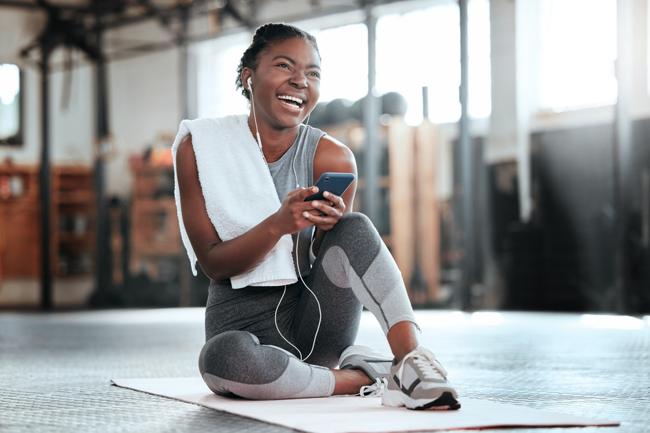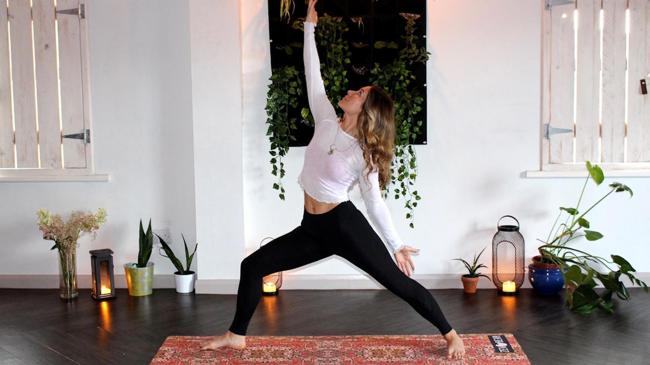Summary
Fun ways to do cardio without feeling like you’re exercisingfrom dance to tag, explore heart-healthy workouts disguised as play.
Source: Rolling Out

AI News Q&A (Free Content)
Q1: What are some fun cardio activities that can boost heart health without feeling like traditional exercise?
A1: Fun cardio activities that don't feel like traditional exercise include dancing (such as Zumba or Funk classes), trampoline jumping, roller skating, playing active games like tag, basketball, or soccer, and even activities like gardening or hiking. These activities elevate the heart rate and provide cardiovascular benefits while being enjoyable and social, making it easier to maintain regular physical activity.
Q2: How much moderate-intensity aerobic exercise is recommended weekly for adults to maintain heart health, and what are the benefits?
A2: According to the World Health Organization, adults should aim for at least 2.5 hours of moderate-intensity aerobic exercise per week. Even as little as 11 minutes per day can significantly reduce risks of early death, cardiovascular disease, stroke, and cancer. Activities like brisk walking, cycling, or dancing can fulfill these recommendations and lead to improved mitochondrial health in heart and liver tissues.
Q3: Which playful cardio activities have been shown to provide both physical and psychological benefits, according to recent studies?
A3: Dance-based cardio activities, especially when conducted in group settings, have been shown to offer both physical improvements—such as increased exercise capacity and muscle strength—and psychological benefits like improved mood and social engagement. Studies with older adults and individuals with chronic conditions found that dance programs not only improved physical health markers but were also highly enjoyable and encouraged regular participation.
Q4: What innovative cardio exercise methods have been highlighted in recent scholarly research for improving efficiency and reducing perceived exertion?
A4: Recent research into loaded downhill walking (DW) as a form of cardio exercise has shown that repeated bouts can lead to muscular and nervous adaptations, resulting in lower perceived exertion and reduced cardio-metabolic demand during subsequent sessions. This means that innovative methods like DW can become more efficient and enjoyable as the body adapts, making it feel less strenuous over time.
Q5: How can integrating play into physical activity routines help individuals who dislike traditional exercise?
A5: Integrating play into physical activity—such as through 'playouts' like climbing, balancing, or playing outdoor games—can make exercise feel less like a chore and more like an adventure or side quest. This approach helps individuals, especially those who are resistant to traditional workouts, to stay active by associating movement with fun and exploration, leading to better adherence and enjoyment.
Q6: What is cardio drumming, and why is it considered an accessible and enjoyable cardio workout?
A6: Cardio drumming combines rhythmic drumming movements with exercise balls and upbeat music to create a full-body cardio workout. It is accessible to people of all fitness levels and does not require any prior drumming experience. The group and musical elements make it enjoyable, social, and effective for raising heart rate and improving coordination.
Q7: What are the health impacts of replacing sedentary leisure activities with fun, active alternatives like golfing or rollerblading?
A7: Replacing sedentary activities with active alternatives such as golfing (especially when carrying clubs), rollerblading, or family sports can significantly increase daily calorie expenditure and improve cardiovascular health. For example, carrying golf clubs can burn 205 calories in 30 minutes, and rollerblading boosts aerobic endurance and lower body strength. These activities help maintain a healthy lifestyle without the feeling of forced exercise.
References:
- Aerobic exercise - Wikipedia
- , "Cardio drumming - Wikipedia
- , "7 Workouts That Don't Feel Like Exercise - MyXperience Fitness
- , "Fun Cardio Workouts That Aren't Running - BodyCompleteRx
- , "Dance for people with chronic breathlessness: a transdisciplinary approach to intervention development
- , "Neuromuscular and Metabolic Responses during Repeated Bouts of Loaded Downhill Walking
- , "25 Ways to Exercise Without Realizing It - Nerd Fitness
- , "Alternative Exercises for Fun and Fitness - Fit Mother Project





